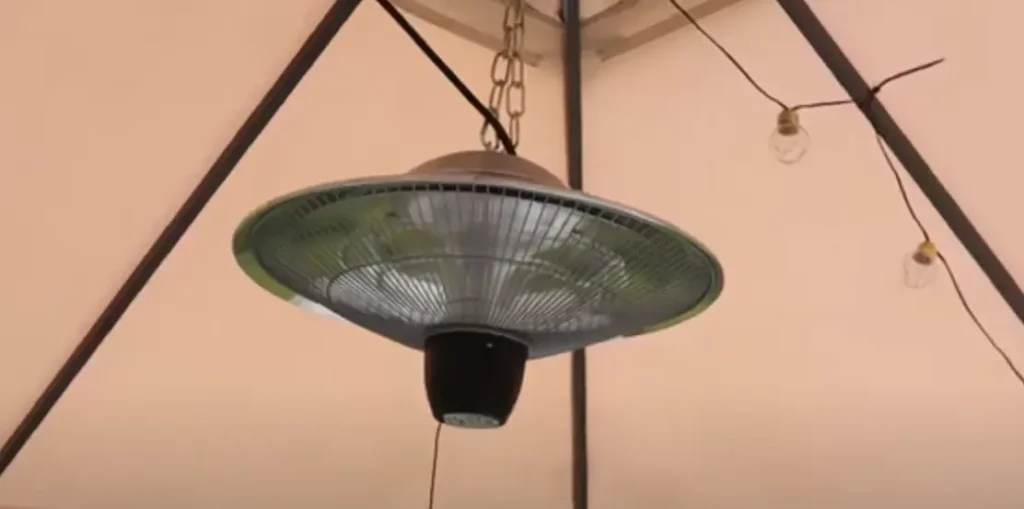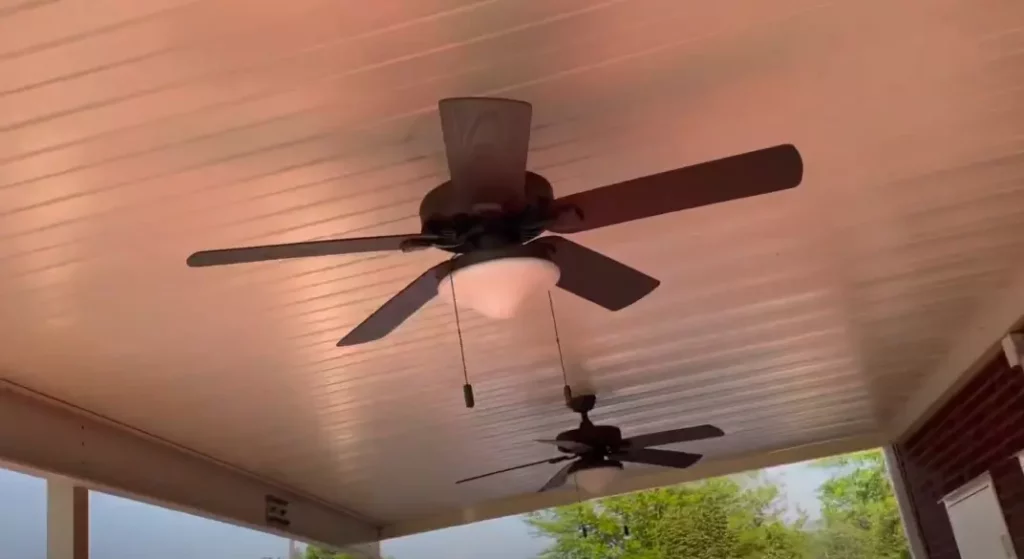Are you looking forward to installing a gazebo ceiling fan and wondering what the steps are to get it working correctly? If so, you will find our gazebo ceiling fan installation helpful guide.
Gazebos are outdoor structures that allow you to get outside and enjoy the outdoors without worrying about the scorching heat or weather elements; however, you may find that your gazebo has poor airflow or there is not enough space for air flow due to the size of your gazebo and internal decor and furniture, for these reasons you might need to install a gazebo ceiling fan.
Installing a gazebo ceiling fan isn’t at all difficult; however, there are steps that we like to follow to get it working correctly and distribute the airflow properly in your desired locations in your gazebo.
Start with the suitable Gazebo Ceiling Fan.
Our recommended gazebo ceiling fan for small-sized gazebos, such as the 8×8 gazebos, is the Allen & Roth Valdosta 20-inch ceiling fan for gazebo will make you want to spend most of your days in your cooled-down gazebo.
Our Recommended Gazebo Ceiling Fan for Small-Sized Gazebo
Since you will be installing a ceiling fan in your gazebo, you may want one that can cool down your gazebo evenly; for this, the gazebo ceiling fan has to be centred correctly. Its fan blades spread wide enough in a symmetry design which adds to the decor of your gazebo.
For medium-sized gazebos such as 10 x 10 Gazebo, and average-sized gazebos such as 10 x 12 Gazebo, and 12 x 12 Gazebo.
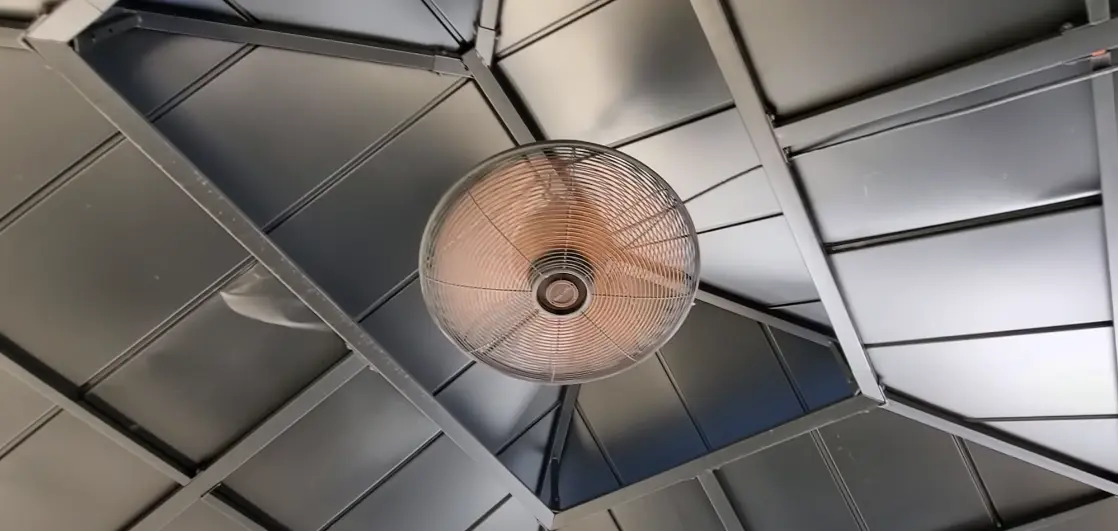
For medium and average Sized gazebos, we recommend the Harbor Breeze Merrimack II 52-inches outdoor ceiling fan; it comes with a light kit to add touch and functionality to your gazebo lighting and cooling needs.
Our Recommended Gazebo Ceiling Fan for Medium-Sized Gazebo
We recommend taking your time, using a measuring tape, and finding the centre of your gazebo ceiling; this is the recommended place to install your ceiling fan for gazebo. If your gazebo falls under the category of big gazebos, you might need a much bigger gazebo ceiling fan such as the Minka-Aire 65 Inch Outdoor Ceiling Fan.
Our Recommended Gazebo Ceiling Fan for Large-Sized Gazebo
It’s important to note that not all ceiling fans are suitable for outdoor use; we have listed some of our top recommended gazebo ceiling fans; however, if you would like to shop one for yourself, you should look for outdoor models that are specifically made to withstand the temperatures and moisture changes of outdoor environments.
Prepare Your Gazebo Electrical and Fan Wiring.
The next step involves preparing the wiring needed for your ceiling fan for gazebo; the wiring should run from your power source to your gazebo ceiling fan; if you have installed electricity on your gazebo, you will need a short wire compared to users who need to run electricity from the house to the gazebo.
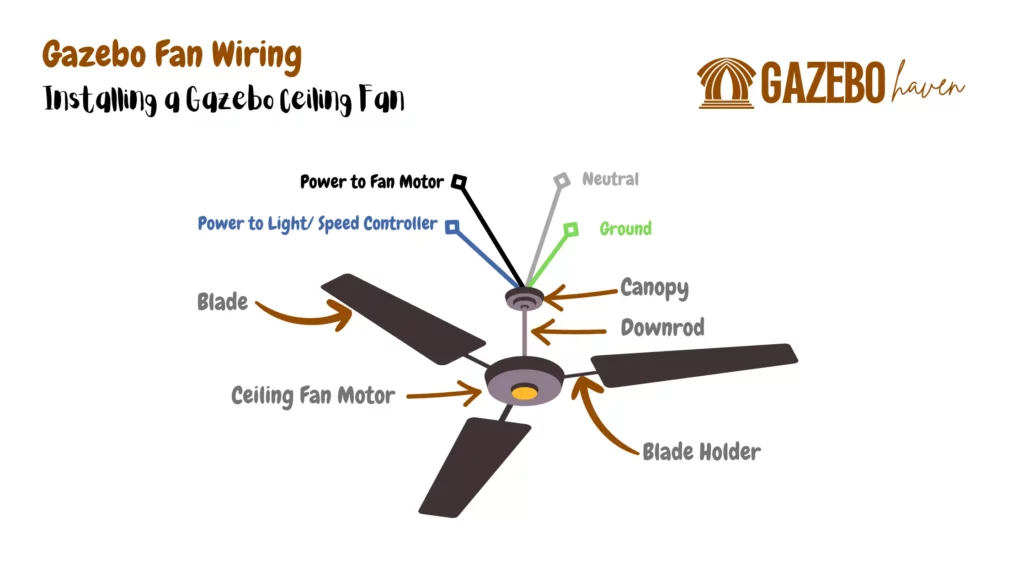
We recommend two methods of installing your gazebo ceiling fan wiring: you can run the wiring directly to your circuit box or install an outdoor plug-in ceiling fan for gazebo. You can also use a light switch to control your gazebo ceiling fan instead of an outdoor smart plug.
If you don’t know anything about electrical wiring, we recommend having a reliable and certified electrician install your gazebo ceiling fan. Faulty electrical wiring causes the highest number of residential fires in the United States.
Isolation of electrical equipment
It’s important to note that your gazebo is prone to weather elements such as rain and winds, which significantly affect your gazebo ceiling fan wiring. For these reasons, you must protect your gazebo ceiling fan and electrical wiring by isolating them properly.
Plastic is an excellent option for gazebo wiring isolation. You will find lots of plastic PVC Piping that you can pass through the wires; plastic is ideal for hydro isolation and prevents squirrels, rats, rats, and other small outdoor animals from accessing your electrical cables.
When not in use, it’s essential to cover your gazebo ceiling fan blades with something that will last throughout the heavy rainy seasons, as long as you have made sure to protect/ isolate your wires with PVC Plastic and gazebo ceiling fan blades and motor with a waterproof cover, you don’t have to worry about having your gazebo ceiling fan electrical system from any electrical problems caused by water and animal damage.
Gazebo Electrical Wires Organization.
It’s essential to organize your gazebo electrical wires properly for easier management and to hide unnecessary equipment that will block views from your gazebo décor; managing your gazebo wires is essential for maintaining and functioning your gazebo electrical system and your gazebo ceiling fan.
You’ll need to tighten and hold the wires together using wire ties; we advise against having excess wires and recommend cutting off the extra wires to prevent tangling or loosening of the cables over time.
Assembling and Installing your Gazebo Ceiling Fan.
Once you have set up your wires correctly and ensured they are tight and safe, assemble your gazebo ceiling fan and connect your electrical wires to the fan.
To assemble your gazebo ceiling fan, we recommend following the instructions on the assembly guide that will be included with your gazebo ceiling fan after purchase; we don’t recommend trying to wing it as some outdoor fans require special attention, especially when it comes to waterproofing the ceiling fan.
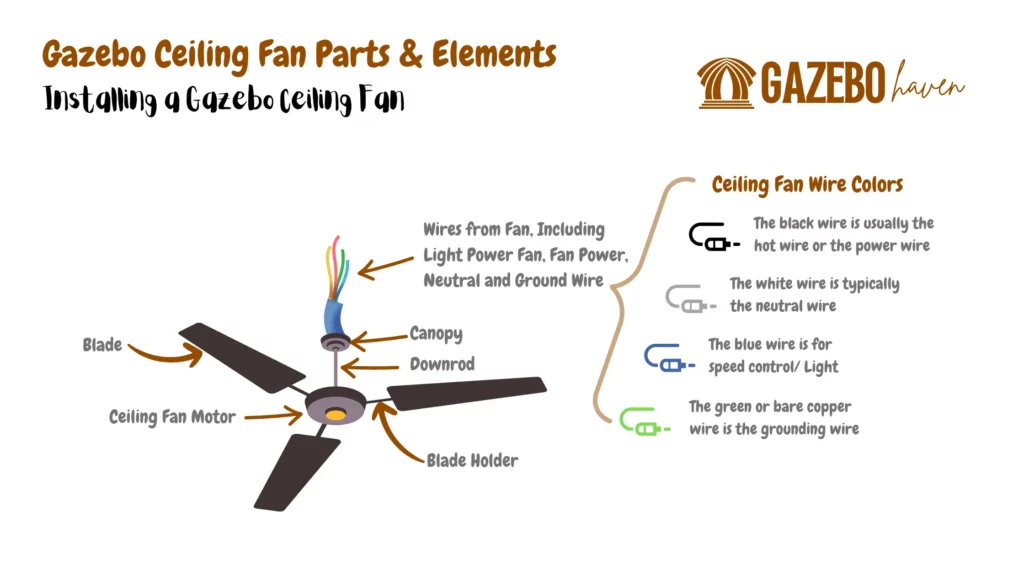
It’s essential to ensure the bolts and screws are tight, which might cause performance and security issues when using your gazebo ceiling fan.
The following steps involve making sure your gazebo ceiling fan is firmly attached to your gazebo ceiling frame. To do this, you will need to mount the gazebo ceiling fan to the frame of your gazebo, and also some people use weight strips on open gazebos to prevent the fan from wobbling during a windy day.
At this point, you can test if your gazebo fan is working correctly since the project is complete, and your gazebo fan will function as needed; we recommend making sure over time you check the wires isolations and fan blades before starting the fan for any damage or buildup of outdoor materials such as leaves and bird nests that might damage the fan blades after starting the fan with materials blocking it.
Last update on 2024-07-13 / Affiliate links / Images from Amazon Product Advertising API





